#Madame Récamier
Text
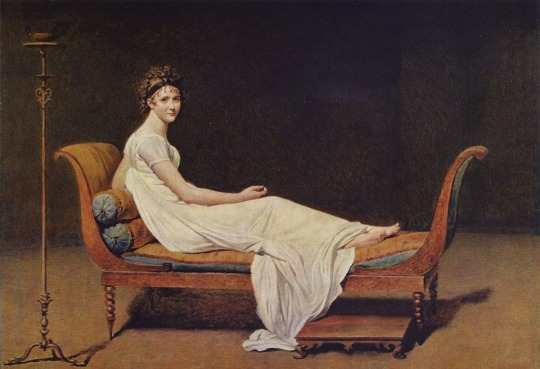

Madame Récamier
Jacques-Louis David, Neoclassical, 1800
René Magritte, Surrealist, 1949
#Madame Récamier#récamier#Juliette Récamier#jacques louis david#David#René Magritte#magritte#1800#1949#19th century#1800s#19th century art#20th century#20th century art#neoclassical art#neoclassical#neoclassicism#surrealism#surrealist#surrealist art#art#French#French art#Napoleonic era#France#empire style#painting#portrait#history#first french empire
4K notes
·
View notes
Text

Madame Récamier
#Madame Récamier#singer#woman#beauty#pretty#model#eyes#lips#sexy#hot#beautiful body#legs#thighs#beautiful hips#sexy hips#feet
14 notes
·
View notes
Text

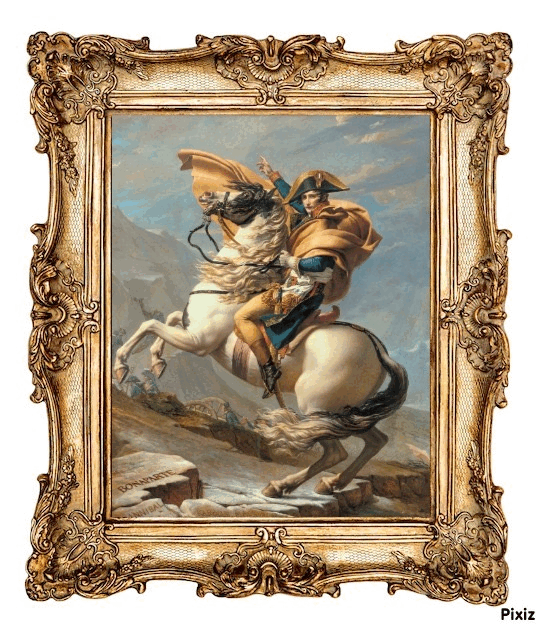



Disney's The Haunted Mansion | Changing Portraits (2003 Film Version)
The changing portraits appear in the 2003 film, "The Haunted Mansion", wherein they are different versions of the original ones in the Disney Theme Park Attraction. It is noted, however, that the portraits are historic paintings.
The changing portraits from the Disney Theme Park Attraction appearing in the 2003 film apply on the three historic paintings:
1. The portrait of Madame Récamier (Portrait of Jeanne Françoise Julie Adélaïde Récamier, known as Juliette) as the tiger lady (The Werecat Lady's Changing Portrait). In this film, as a real estate agent, Jim Evers (Eddie Murphy) walks through the portrait hall and passes by the portrait of Madame Récamier, she transforms into an orange tiger. This painting was originally done by François Pascal Simon Gérard. On the DVD Menu, the portrait of Madame Récamier appears in the "Captions and Subtitles" section.
2. The portrait of Napoléon Bonaparte at the Great St. Bernard Pass (a.k.a. Napoléon Crossing the Alps) as a skeleton (The Skeletal Horseman's Changing Portrait). In this film, as Jim Evers walks through the portrait hall and passes by this portrait, Napoléon Bonaparte transforms into a skeleton as an alternate to the Black Prince. This painting was originally done by Jacques-Louis David. On the DVD Menu, the portrait of Napoléon Bonaparte at the Great St. Bernard Pass appears in the "Audio Options" section.
3. The portrait of a Roman Lady (Portrait of Anna Risi, a.k.a. Nanna) as Medusa (Medusa's Changing Portrait). The portrait of Anna Risi becomes Medusa's gorgon form, with Caravaggio's depiction of the severed head of "Medusa" on a shield being applied when the portrait transforms. This painting was originally done by Sir Frederic Leighton. On the DVD Menu, the portrait of Anna "Nanna" Risi appears in the main "Set Up" section where she transformed.
The other two historic portraits in the 2003 film don't match perfectly when they change, but they're still similar. They include are as follows:
1. The portrait of View of Brest Harbor (Vue de la rade de brest prise au bas de la batterie du château) transforms into a ship on fire at night, with Xanthus Russell Smith's depiction of C.S.S. Manassas & U.S.S. Hartford in New Orleans Harbor (The Ship on Fire). That portrait looks different than the Flying Dutchman's changing portrait from the ride. This painting was originally done by Jean-François Hue.
2. The portrait of the Carnival Scene (or "The Minuet") transforms into hell (The Armageddon). In the 2003 film, the portrait was only hung in the Gracey Manor foyer at the grand staircase behind the foyer's clock passageway. And unfortunately, "The Armageddon" changing portrait was not in the portrait hall like what we see at Disneyland, nor Walt Disney World. This painting was originally done by Giovanni Domenico Tiepolo.
#disney#the haunted mansion#the haunted mansion 2003#disney's the haunted mansion#movie#2003#2003 film#halloween#welcome foolish mortals#999 happy haunts#eddie murphy#changing portraits#madame récamier#the tiger lady#the werecat lady#napoléon crossing the alps#the horseman#the skeletal horseman#skeleton#a roman lady#anna risi#medusa#the gorgon#medusa the gorgon#vue de la rade de brest prise au bas de la batterie du château#ship on fire at night#css manassas & uss hartford in new orleans harbor#the carnival scene#the minuet#the armageddon
4 notes
·
View notes
Text
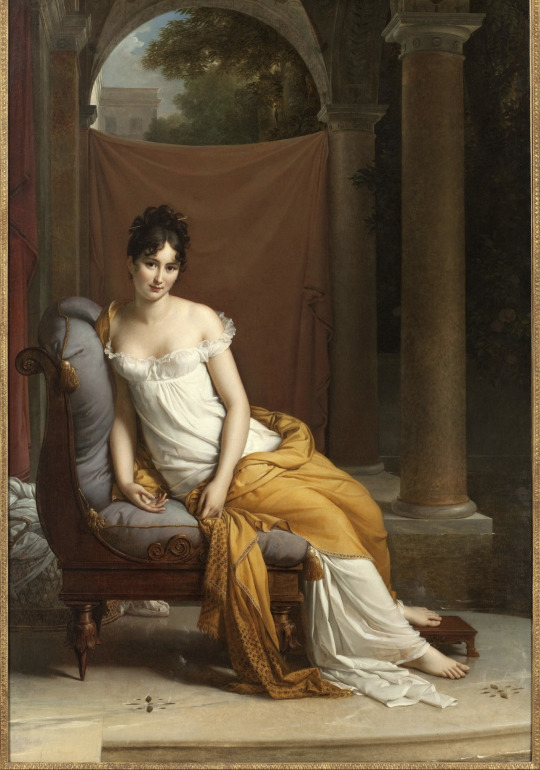
Madame Juliette Récamier
1802
4 notes
·
View notes
Photo
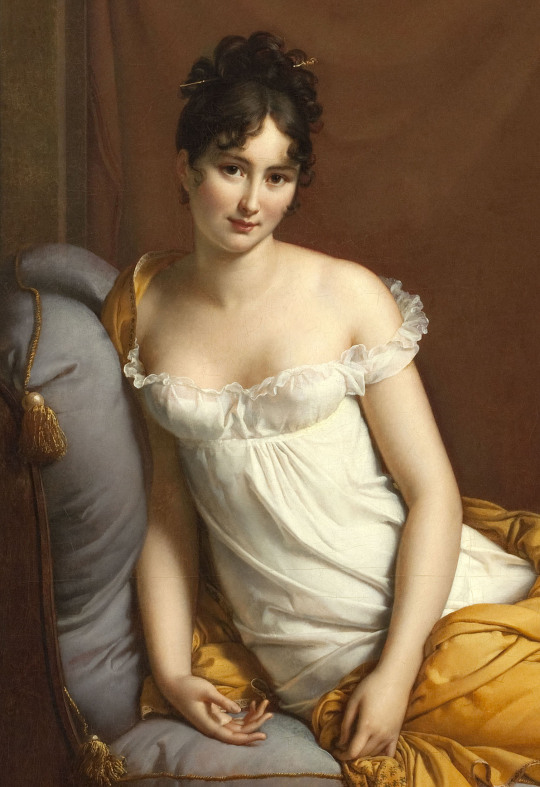
37 notes
·
View notes
Text

Bust of Madame Récamier, by Jean-Antoine Houdon (1741-1828) after Joseph Chinard (1756-1813)
#Bust of Madame Récamier#Jean-Antoine Houdon#Joseph Chinard#1700s#18th century#sculptor#art#art history#sculpture#art history blog#artwork
212 notes
·
View notes
Text
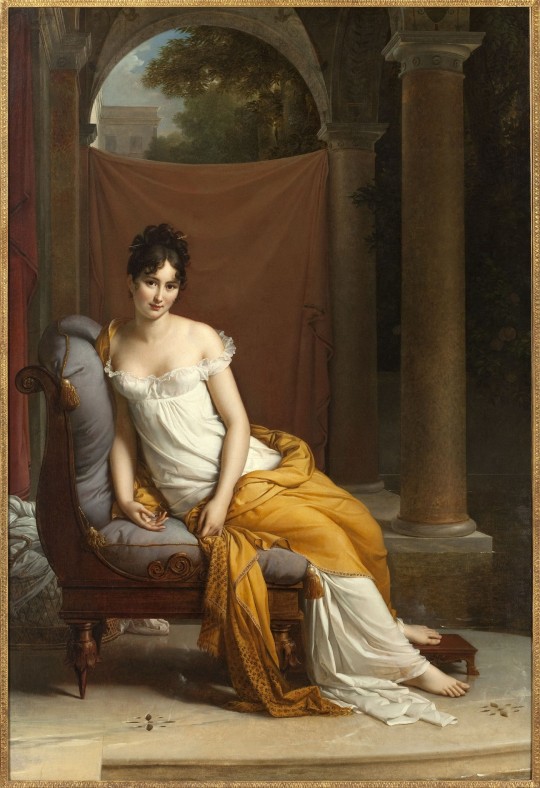
Francois Gérard (French, 1777-1837) • Madame Récamier • 1802 • Musée Carnavalet, Paris
#neoclassicism#women in white#art#la robe blanche#painting#white dress#women in paintings#19th century art#portrait#fine art#french painter#paintings of women#françois gérard
251 notes
·
View notes
Photo

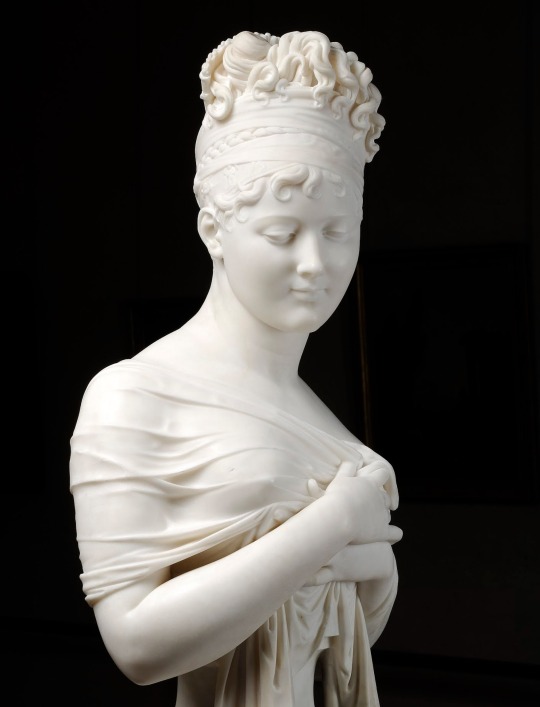
“An expression at one and the same time naive and passionate gave her person an indescribable voluptousness and singularly likeable innocence”
Bust of Madame Récamier by Joseph Chinard, c. 1806-06
#historicwomendaily#juliette recamier#madame recamier#neoclassicism#french#19th century#sculptures#art#women in history#history crushes#art history#women in art#joseph chinard#statues#statue#beauty#beauty in art#hulderposts#female beauty in art
361 notes
·
View notes
Text
THIS DAY IN GAY HISTORY
based on: The White Crane Institute's 'Gay Wisdom', Gay Birthdays, Gay For Today, Famous GLBT, glbt-Gay Encylopedia, Today in Gay History, Wikipedia, and more … April 22


Today is EARTH DAY! – Earth Day's a name used for two different observances, both held annually during spring in the northern hemisphere, and autumn in the southern hemisphere. These are intended to inspire awareness of and appreciation for the Earth's environment. The United Nations celebrates Earth Day, which was founded by John McConnell in 1969, each year on the March equinox, while a global observance originated by Gaylord Nelson as an environmental teach-in, also called Earth Day, is celebrated in many countries each year on April 22.


1766 – Madame de Staël, (Anne Louise Germaine de Staël-Holstein) French author (d.1817); When old editions of the staid Encyclopedia Britannica say that someone's sex life is "unconventional," it can sometimes mean little more than the subject enjoyed something other than missionary position with his clothes on and the lights off. When a woman's sex life is even mentioned, no less described as "unconventional," then you had better sit up and take notice.
Madame de Staël liked not only men, but women, too. In 1798 the French novelist, separated from her husband, began living with a male lover, and met Juliette Récamier, the most celebrated beauty of her time. Mme. de Staël was 31, Juliette ten years younger.
"She fixed her great eyes upon me," wrote Juliette, "and paid me compliments about my figure which might have seemed exaggerated and too direct had they not seemed to have escaped from her. From that time on I thought only of Mme. de Staël."
They lived together for the next nineteen years, until the novelist died. Her final words to Juliette, to whom she had once written, "I love you with a love that surpasses that of friendship," were "I embrace you with all that remains of me."


Emile Norman with Brooks Clement
1918 – Emile Norman (d.2009) was a California artist known for mosaics, panels, jewelry and sculpture - with a meticulous attention to detail. Emile Norman grew up with a club foot on a San Gabriel Valley walnut farm. From an early age he exhibited artistic talent, carving his first sculpture from a riverside rock at age 11 - ruining his father's chisels, but also gaining his respect.
From 1946, Norman lived and worked at his studio-home in Big Sur on Pfeiffer Ridge with his partner Brooks Clement, until Clement's death in 1973 from cancer.
In 2008, actors Michael Tucker and Jill Eikenberry met Norman, purchased land from him in Big Sur, became his neighbors and his close friends - eventually taking five years to produce a PBS documentary, Emile Norman: By His Own Design. Having moved in with Norman in 2003, long-time friends Jeff Mallory and C. Kevin Smith had discovered movie film shot by Norman's partner Brooks Clement on a hand-cranked 16 mm Bolex, footage that was eventually incorporated in the documentary.
Norman died September 24, 2009 in Monterey, California at age 91, survived by three sisters.

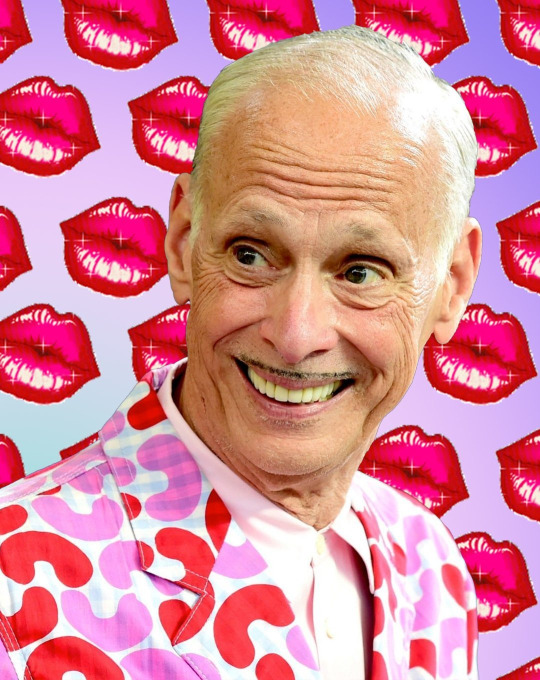
1946 – John Waters was born on April 22. Recognizable by his pencil-thin moustache this American filmmaker, actor, writer, personality, visual artist and art collector, rose to fame in the early 1970s for his transgressive cult films and has, against all intuition and all odds has become the toast of Broadway with not one, but two major musicals based on his cinematic oeuvre.
For his 16th birthday, Waters received an 8mm movie camera from his maternal grandmother, Stella Whitaker. His first movie was Hag in a Black Leather Jacket. According to Waters, the film was shown only once in a "beatnik coffee house" in Baltimore. Waters was a student at New York University (NYU) in New York City.
In January 1966, Waters and some friends were caught smoking marijuana on the grounds; they were soon expelled. Waters returned to Baltimore, where he began work on his next film, Eat Your Makeup, which was filmed that year. Waters' films would become Divine's primary star vehicle. Waters' early films were all shot in the Baltimore area with his company of local actors, the Dreamlanders. In addition to Divine, the group included Mink Stole, Cookie Mueller, Edith Massey, David Lochary, Mary Vivian Pearce, and others. These early films were among the first picked up for distribution by New Line Cinema. Waters' films premiered at the Baltimore Senator Theatre and sometimes at the Charles Theatre.
Waters' early campy movies present filthily lovable characters in outrageous situations with hyperbolic dialogue. His early films, Pink Flamingos, Female Trouble, and Desperate Living, which he labeled the Trash Trilogy, pushed hard at the boundaries of conventional propriety and movie censorship. A particularly notorious final segment of Pink Flamingos, simply added in as a non sequitur to the end of the film, featured, in one take without special effects, a small dog defecating and Divine eating the feces.
His 1981 film Polyester starred Divine opposite closeted, once-teen-idol Tab Hunter. Since then, his films have become less controversial and more mainstream, although works such as Hairspray, Cry- Baby and Serial Mom still retain his trademark inventiveness. The film Hairspray was turned into a hit Broadway musical, which swept the 2003 Tony Awards, and a movie adaptation of the Broadway musical was released in theaters on July 20, 2007.
Waters' most recent film, the NC-17-rated A Dirty Shame, was a move back toward his earlier, more controversial work of the 1970s. He also had a cameo in Jackass: Number Two, which starred Dirty Shame co-star Johnny Knoxville. A Gay American, Waters is an avid supporter of Gay rights and Gay pride.


1953 – Charles Farthing (d.2014) was a New Zealand doctor who specialised in the treatment of AIDS. He was the Medical Director of the AIDS Healthcare Foundation from 2001 to 2007. He later worked at Merck Sharp & Dohme as the Director of medical affairs for infectious diseases in the Asia-Pacific.
Farthing was born on 22 April 1953 in Christchurch, New Zealand. His father was an accountant and his mother was a music teacher. He was educated at Christ's College, Christchurch, an independent boys school. As a child he had considered entering the priesthood. He went on to study medicine at the University of Otago in Dunedin.
Farthing began his medical career in New Zealand where he practiced as a dermatologist. After five years, he moved abroad and worked for a year in Riyadh, Saudi Arabia. He then moved to England and joined St Stephen's Hospital in Chelsea, London. Between 1985 and 1987, the numbers of AIDS patients treated at St Stephen's rose from a dozen to over 1000. From 1985 to 1988, he was involved in clinical trials for the antiretroviral drugs Thymosin, AZT and foscarnet. In 1987, he helped found the Kobler Center at St Stephen’s Hospital which specialised in the treatment and research of HIV/AIDS. It was one of the first wards in the United Kingdom to specialise in the area. He was Chair of the all-party parliamentary committee on AIDS during the late 1980s, and was instrumental in guiding the governments reaction to the AIDS crisis.
In 1988, he was awarded a Winston Churchill fellowship which allowed him to move to the United States of America where he studied AIDS at the Bellevue Hospital in New York. He later became the Director of the hospital's AIDS treatment program. In 1994, he moved to Los Angeles where he became the principal investigator of the AIDS Healthcare Foundation, and in 2001, he was promoted to Medical Director. In 2007, he left the United States for Hong Kong where he joined Merck Sharp & Dohme. At the time of his death, he was Director of medical affairs for infectious diseases in the Asia-Pacific.
In the 1990s, after moving to America, Farthing played a leading role in the introduction of the triple drug therapy that has transformed survival rates and quality of life for those infected with HIV. In 1997, frustrated by the way in which safety concerns were preventing tests of HIV vaccines on live human candidates, he volunteered to try the vaccines himself. "Someone has to go first," he explained. "Medicine has changed. Years ago, people took risks. Now it is as if research cannot expose anyone to risk. That is why this research is going so slowly."
In the event, discouraging results from tests of a similar vaccine in monkeys meant that the trials did not go ahead.
Farthing died of a heart attack in a Hong Kong taxi in 2014.
Farthing was gay. At the time of his death he was in a relationship with Dougie Lui, a hotelier.

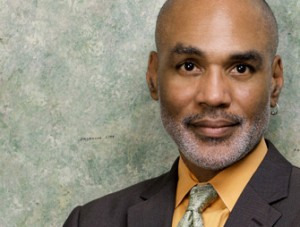
1956 – Phill Wilson founded the Black AIDS Institute in 1999 and is a prominent African-American HIV/AIDS activist. Wilson is himself both gay and HIV-positive. His partner, Chris Brownlie, died of HIV-related illness.
Prior to founding the Institute, Wilson served as the AIDS Coordinator for the City of Los Angeles from 1990 to 1993, the Director of Policy and Planning at AIDS Project Los Angeles from 1993 to 1996. He was co-chair of the Los Angeles County HIV Health Commission from 1990 to 1995, and was an appointee to the HRSA AIDS Advisory Committee from 1995 to 1998.
Wilson grew up in Chicago. His parents had moved north from the southern states like many black Americans did after World War II. Both his parents worked outside the home, but they also provided a strong, supportive environment within the family. He grew up learning a commitment to family and to the community too.Wilson was often involved in civil rights activities in the Chicago area, such as Operation PUSH, Operation Breadbasket, and Black Expos, according to Out Magazine. He credits his family with continuing to support him after he came out to them regarding his sexuality. Wilson told Out a story about how he and his former lover, Chris Brownlie, had been to a family reunion and an in-law commented to a cousin about their presence after they had left. "My cousin," said Wilson, "who is a very committed, active, and faithful Jehovah's Witness told this woman, 'that man is my cousin. He is welcome here, and his partner's welcome here. They're a part of our family. You can't come to my house and talk about my cousin and his partner that way. That's not allowed.'"
Phill Wilson has always been busy. He was busy in high school with community activities and still managed to graduate early. He worked hard for American Telephone & Telegraph (AT&T) and was married for a short time. He described himself as naive to his sexuality until he heard a radio interview with a publisher of gay magazines. He then went about trying to locate the gay community in Chicago and met his partner of 10 years Chris Brownlie in 1979.
In 1981 Wilson said he "had enough of the cold weather of Chicago." He and Chris moved to the Los Angeles area. They ran a giftware manufacturing company called Black Is More Than Beautiful. By this time both Phill and his partner had heard of AIDS. Some of their friends had been ill or had died. Wilson said around this time both he and Chris had biopsies of their lymph nodes taken, because they had been swollen for a long time. "No one knew what caused AIDS then," said Wilson. "The doctors told Chris and I that there were abnormalities to the lymph nodes but they couldn't tell us what it meant."
As the years progressed more friends grew ill and people learned a virus caused AIDS. In 1986 California placed Proposition 64 - a proposal calling for the forced quarantine of all people with AIDS - on the election ballot. Both Wilson and Brownlie volunteered to work for a committee opposing the passage of this proposal.
About the time of the November of 1986 election Brownlie became ill. Wilson said Brownlie's illness, plus the amount of time they found themselves working on the ballot proposal led them to close down their giftware business. With their efforts Proposition 64 went down to defeat. In 1986 Wilson also founded a group called the AIDS Prevention Team. This group was started with a small grant Wilson received while volunteering with a social organization called Black and White Men Together.
In early 1987 Wilson and Brownlie were both diagnosed with HIV infection, which nearly always gives way to full blown AIDS, an often sexually transmitted condition in which the body's immune system is depressed, making one susceptible to a host of health problems, usually becoming fatal. In fact, Brownlie's illness was classified as AIDS. This diagnosis just seemed to make Wilson and Brownlie work harder. They also founded the AIDS Health Care Foundation around that time, which has grown into the largest nonprofit HIV medical services provider in Los Angeles County. It now includes the Chris Brownlie Hospice, named for Wilson's late partner.Phill Wilson is realistic in his work with AIDS. He knows the heavy losses of colleagues and friends. His lover Chris died in 1989. He wrote about the grief and anguish in Advocate magazine in 1992. He often speaks of his work as war. But the necessity of the work keeps him going.
"If you don't do any of that long term planning," he told Out, "then you're assuring that it's going to be around another 5, 10, 15, or 20 years."
"By the time we have the infrastructure we have to have," said Wilson in POZ, "I'll probably be dead. But right now I'm doing what I'm doing and living my life as I see it."


1975 – Jónsi (Jón Þór Birgisson) is the guitarist and vocalist for the Icelandic post-rock band Sigur Rós. He is known for his use of a cello bow on guitar and his falsetto voice. He is also blind in his right eye and is openly gay.
Apart from Sigur Rós, Jónsi also performs together with his boyfriend Alex Somers as an art collaboration called Jónsi & Alex. They released their self-titled first book in November 2006, which was an embossed hardcover limited to 1000 copies,along with their first album, Riceboy Sleeps, in July 2009. On December 1, 2009, Jónsi's official website, jonsi.com, was launched in anticipation of his debut solo album, Go, which was released the week of April 5, 2010. After the release of the album, Jónsi promptly started a worldwide tour across North America and Europe, featuring songs from the album plus a few other selections.


1982 – Thomas Bridegroom was born in Knox, Indiana, USA as Thomas Lee Bridegroom. He was an actor, known for The X-Effect (2006), Bridegroom (2013) and The Janice Dickinson Modeling Agency (2006).
Tom was born and raised in Knox, Indiana and finished high school at the prestigious Culver Military Academy. Tom excelled at CMA, winning the Hobie Leadership award, which garnered him a trip to Washington, D.C. to meet with the president. After graduating from CMA Cum Laude, Tom enrolled in Vassar College, where he trained in voice and piano.
Although he was succeeding in his academic career at Vassar, Tom made the decision to leave school early and pursue his true calling: a career in the entertainment industry. Tom co-wrote the powerful and meaningful song, “Lost” with his friend Paige Williams, which attracted attention from the music industry, as well as writing numerous other songs with many other talented musicians, and on his own.
Tom also pursued ambitions of acting and being in front of the camera. Tom gained national recognition at the age of 23 when he was chosen as the Hot Boy Next Door for the popular magazine, Teen People, for the October 2005 issue.In 2005, Tom met his partner, Shane Bitney Crone. Shane and Tom started a social media/public relations company, Bridegroom and Bitney, in 2008.
He died on May 7, 2011 in Los Angeles, California, USA when he accidentally fell off of the roof of his friend's four story building. After his death, Tom's family refused to acknowledge their relationship, and because of this his partner Shane Bitney Crone was prevented from being by Tom's side for several hours as Tom was in the hospital, and was even warned to stay away from the funeral by his family – and even threatened with violence if he were to appear. This is chronicled in the documentary Bridegroom (2013).



1993 – On this date the United States Holocaust Memorial Museum was dedicated in Washington, DC. It marked the first time the United States government inscribed the words "Gay" and "Lesbian" in stone in the museum's exhibit on Gays and Lesbians killed by the Nazis in World War II.


2014 – Harvey Milk is the first openly gay elected official on a U.S. stamp. He was an American politician and the first openly gay elected official in the history of California where he was elected to the San Francisco Board of Supervisors in 1977. He fought and defeated the anti-gay Prop 6. Milk was assassinated in 1978 by Supervisor Dan White.


11 notes
·
View notes
Text
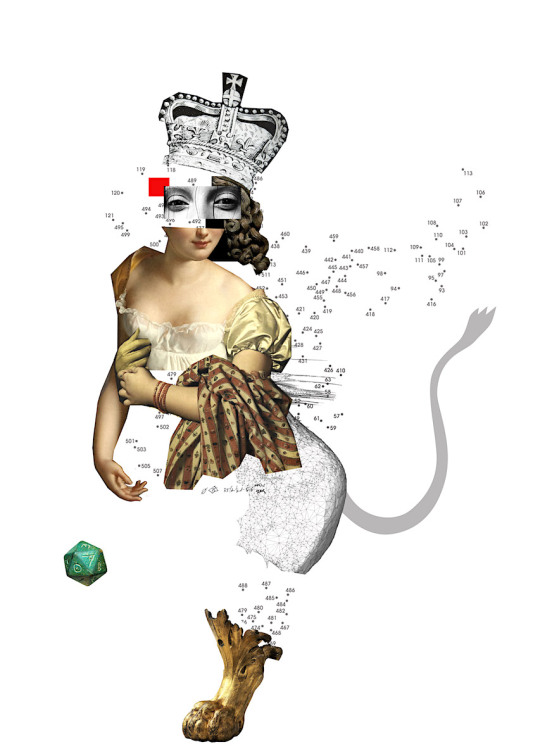
eucanthos
elemental traces no.10 ∈ 42 / enigma probability
Codie Young by Boris Ovini Exhibition Magazine no3 2013
Piero Fornasetti crown
Gold guilded French furniture foot 17-18th c.
François Gérard: Portrait de Juliette Récamier, 1805
Ingres: Madame Panckoucke, 1811
Sølve Sundsbø 3d Head Cape [geodesic glitch]
Riace Warrior bronze (hair)
Faience stone oracle dice with Greek letters, Roman, 2-3rd c.
https://www.metmuseum.org/art/collection/search/253530
thnx alepouditsa & aleyma [the dice was important]
#eucanthos#collage#sphinx#42#Codie Young#Piero Fornasetti#Francois Gerard#Ingres#Sølve Sundsbø#dice#enigma#monsters
44 notes
·
View notes
Text





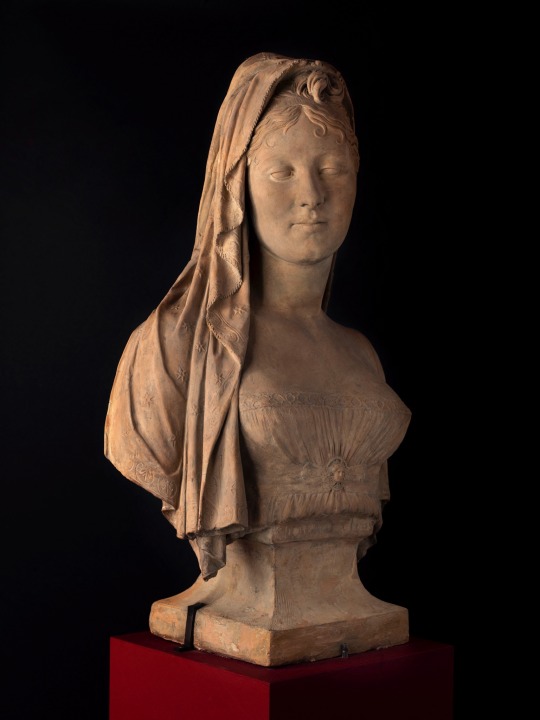


Terracotta bust believed to depict Juliette Récamier
Joseph Chinard
C. 1800-1805, Napoleonic era
Musée Cognacq-Jay
#terracotta#Juliette Récamier#Joseph Chinard#Chinard#Madame Récamier#Récamier#bust#napoleonic era#sculpture#napoleonic#first french empire#19th century#19th century art#1800s art#sculptures#neoclassical#neoclassicism#empire style#veil
435 notes
·
View notes
Text

Madame Récamier
#Madame Récamier#Madame Recamier#singer#woman#beauty#pretty#model#eyes#lips#sexy#hot#beautiful body#legs#thighs#beautiful hips#sexy hips#feet
20 notes
·
View notes
Text
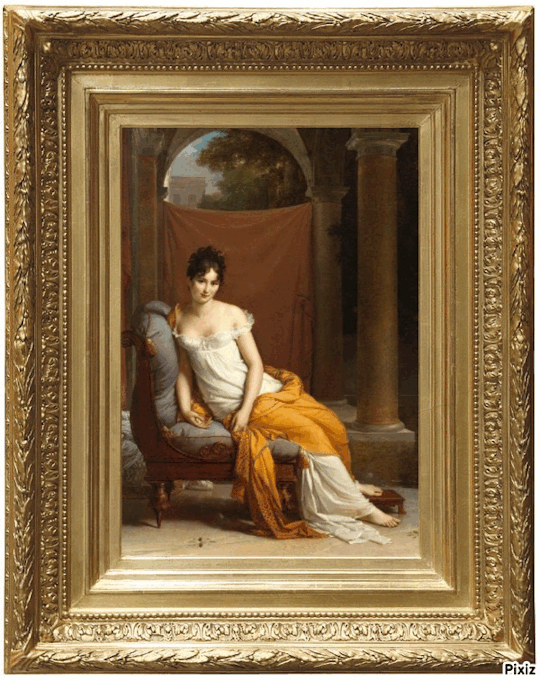
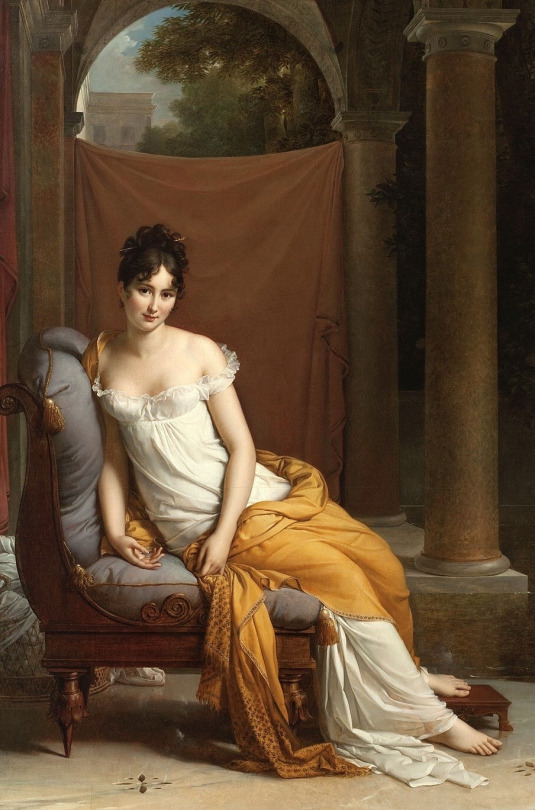

Disney's The Haunted Mansion | The Werecat Lady's Changing Portrait (2003 Film Version)
The Werecat Lady's changing portrait (or the Tiger Lady) from the Disney Theme Park Attraction, "The Haunted Mansion", appearing in the 2003 film is applied on François Pascal Simon Gérard's "Portrait of Madame Récamier" (Portrait of Jeanne Françoise Julie Adélaïde Récamier, known as Juliette). In this film, as a real estate agent, Jim Evers (Eddie Murphy), walks through the portrait hall and passes by the portrait of Madame Récamier, she transforms into an orange tiger.
On the DVD Menu of the 2003 film, "The Haunted Mansion", the portrait of Madame Récamier appears in the "Captions and Subtitles" section. If you have "The Haunted Mansion" on DVD and you wish to see this portrait, here are the following three steps below:
1. Go to "DVD Menu".
2. Select "Set Up".
3. Select "Captions and Subtitles".
#disney#the haunted mansion#the haunted mansion 2003#disney's the haunted mansion#movie#2003#2003 film#halloween#welcome foolish mortals#999 happy haunts#eddie murphy#changing portrait#madame recamier#madame récamier#juliette recamier#juliette récamier#jeanne françoise julie adélaïde récamier#jeanne françoise julie adélaïde bernard récamier#françois pascal simon gérard#françois pascal simon baron gérard#the tiger lady#the werecat lady
3 notes
·
View notes
Text
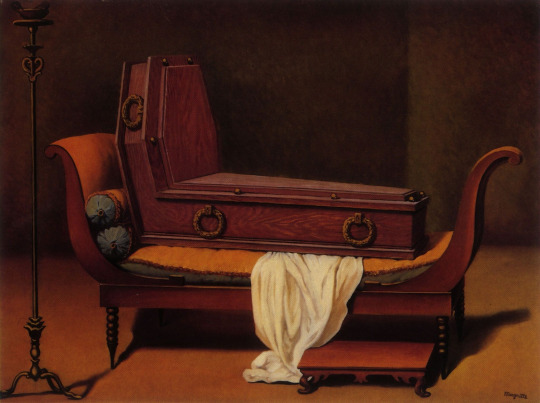
Perspective: Madame Récamier de David, 1951 | Oil on canvas | René Magritte
51 notes
·
View notes
Text
“This even seems a bit like pimping.”
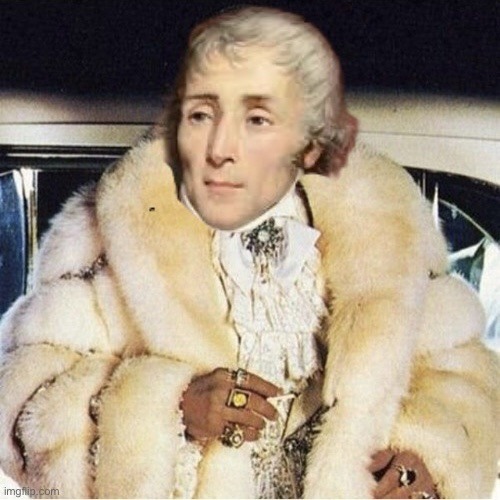
But the princely couple in which he will be most interested is that of Joachim Murat and Caroline, the most ambitious of Napoleon's sisters with Élisa. “Impressive in her pretensions,” Claire de Rémusat says of her, still dreaming of a throne as the Grand Duchess of Berg at the beginning of the Empire. At odds with Talleyrand, she very quickly sensed the services that Fouché could render her and entered into his intimacy. "She bound him to her by a host of little confidences," Madame de Rémusat goes on to say. Fouché allows himself to be approached with pleasure and does not miss an opportunity to be useful to her by placing his proteges in her service: "I am too zealous to do what can be useful to Your Imperial Highness,” he wrote to her about one of them. “[…] I will eagerly seize the first favorable opportunity.” There are a thousand of other such examples like this. He flatters the wife, but he also flatters the husband. We will never know how far this man's indulgence went when it was useful to his interests. In August 1805, he certainly acted as intermediary between Murat and the beautiful Juliette Récamier, Madame de Staël's friend, who turned all heads and in whom Napoleon's brother-in-law took a close interest. Lucien had already fallen in love with her at the start of the Consulate. It nearly became a family affair. We find in the private letters of Fouché to Murat sentences of this kind: “I have undertaken to fulfill the mission that Your Highness has entrusted to me. I presented my compliments to Mme R[écamier]. She sent me a letter in reply, which I have the honor to address to you.” This even seems a bit like pimping. At the same time, the former member of the Convention did everything to persuade the beautiful Juliette to enter the service of Caroline Murat, who at the time already had a court and "ladies for accompaniment." It would have made the husband's business easier. He would not succeed, despite the arrangement of a timely visit by Juliette Récamier to the Château de Neuilly where Caroline Murat was then residing. It never ends with Fouché. For years he would shower Caroline with praise, especially from 1808, when she became Queen of Naples. "She is further embellished on the throne and she knows how to spread charms, even in the circles of her court," he wrote to her husband in 1809. “We hope she does not quite become Neapolitan, and keeps a memory for the Parisians who think a lot about her and who will miss her all their lives.” As he moves away from Joséphine, he gets closer to the Murats, who detest her. They took his side strongly in the divorce affair, and Joachim did not miss an opportunity to support him with Napoleon. Caroline will be flattered to have as sister-in-law a descendant of one of the great sovereign houses of Europe. This will bolster her ambitions. In Fouché's eyes, Murat is popular and easy to maneuver. From 1807 and again in the last months of 1808, he was for him the ideal candidate, if by chance Napoleon were to die in Spain. When Murat came to the throne of Naples in August, he orchestrated a veritable propaganda campaign to his glory in the press. This will also be complained of in the entourage of Napoleon. “Fouche said loudly that he alone could succeed the Emperor, that he alone would inspire the necessary fear in Europe; that he alone enjoyed the confidence of the military.” For his part, the new King of Naples has every reason to be unhappy. He wanted to be king in Poland in 1807, then king of Spain in 1808. Naples is for him only a last resort, at worst a measure of separation. He also complains of being kept on the margin by Napoleon, who does not let him govern as he pleases, and Caroline continues to stir up his ambition. But Murat is only one card in Fouché's game. He is a joker in the event of a hard blow.
—Emmanuel de Waresquiel, Fouché: Les silences de la pieuvre, 2014.
43 notes
·
View notes
Text
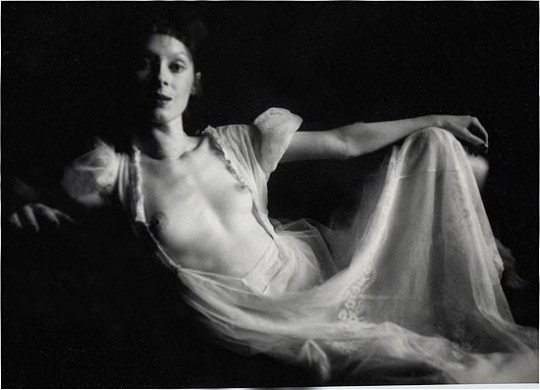
Photography by Karin Székessy
Madame Récamier, 1975
45 notes
·
View notes